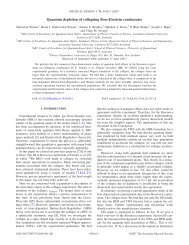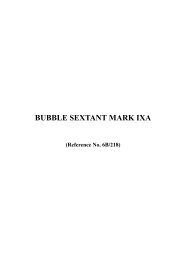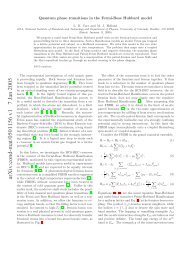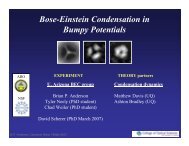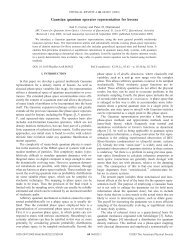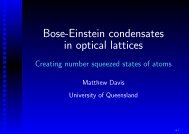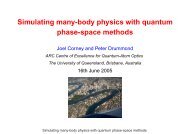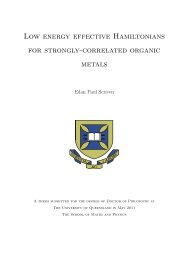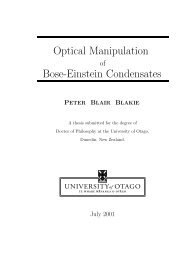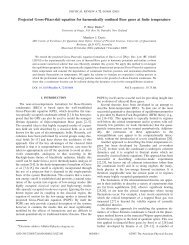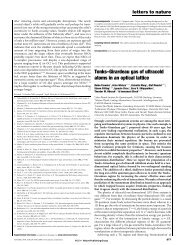Open Quantum Dynamics of Mesoscopic Bose-Einstein ... - Physics
Open Quantum Dynamics of Mesoscopic Bose-Einstein ... - Physics
Open Quantum Dynamics of Mesoscopic Bose-Einstein ... - Physics
You also want an ePaper? Increase the reach of your titles
YUMPU automatically turns print PDFs into web optimized ePapers that Google loves.
6. <strong>Quantum</strong> effects in optical fibre communications systemswhich is a simpler form for calculating the τ derivatives. The resulting expression for thejitter growth for a black soliton (A =1)is〈(∆τ(ζ))2 〉 = 1 (αG12n ζ2 +18n + I(t )0)ζ 3 . (6.42)6nwhere the overlap integral I(t 0 ) is as defined in Eq. (6.34). As in the anomalous dispersionregime, the vacuum fluctuations contribute to quadratic growth in the jitter variance, andgain and Raman fluctuations contribute to cubic growth. However, the size <strong>of</strong> the jitteris smaller than that in the bright soliton case, for the same propagation distance ζ. Thecontribution from the vacuum and gain terms is one half and the contribution from theRaman term is one quarter <strong>of</strong> that in Eq. (6.36), giving dark solitons some advantage overtheir bright cousins.6.6 Summary <strong>of</strong> noise scaling propertiesIn summary, there are three different sources <strong>of</strong> noise in the soliton, all <strong>of</strong> which must betaken into account for small pulse widths. These noise sources contribute to fluctuationsin the velocity parameter, which lead to quadratic or cubic growth in the timing-jittervariance for single-pulse propagation. The noise sources also produce other effects, suchas those effected through soliton interactions, but we will not consider these here.The initial vacuum fluctuations cause diffusion in position which is important for smallpropagation distances. For bright solitons this is given by[48]〈(∆τ(ζ))2 〉 I = π224n + 16n ζ2 (bright). (6.43a)For purposes <strong>of</strong> comparison, note that N =2n is the mean photon number for a sech(τ)soliton. Numerical calculations confirmed that for tanh(τ) dark solitons, the variance wasabout one half the bright-soliton value, as predicted by the analysis in Sec. 6.5.2:〈(∆τ(ζ))2 〉 I = π248n + 112n ζ2 (dark). (6.43b)This shot-noise effect, which occurs without amplification, is simply due to the initialquantum-mechanical uncertainty in the position and momentum <strong>of</strong> the soliton. Because<strong>of</strong> the Heisenberg uncertainty principle, the soliton momentum and position cannot bespecified exactly. This effect dominates the Gordon-Haus effect over propagation distances134



